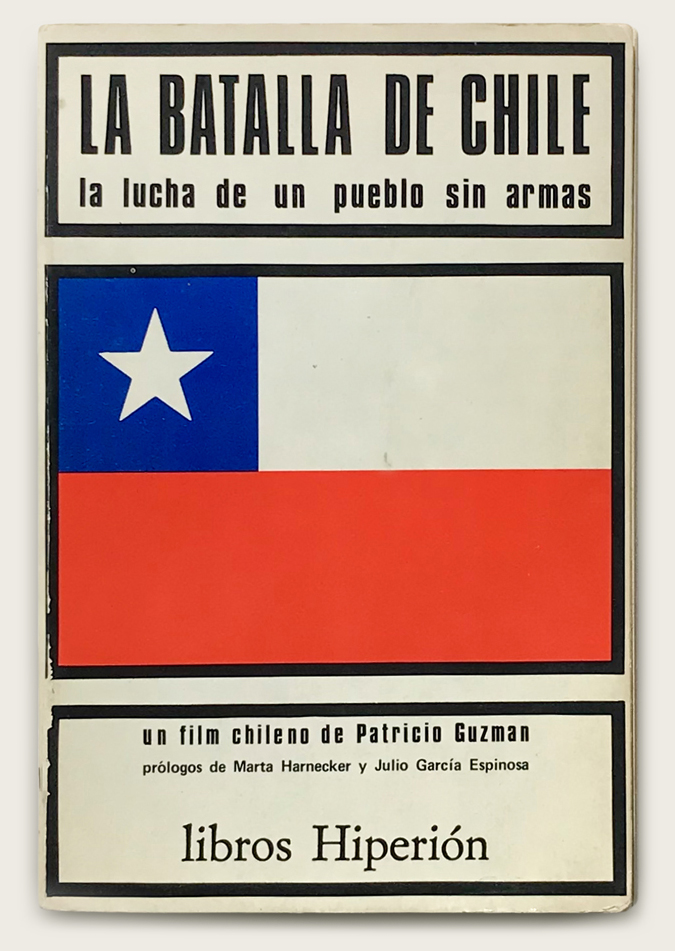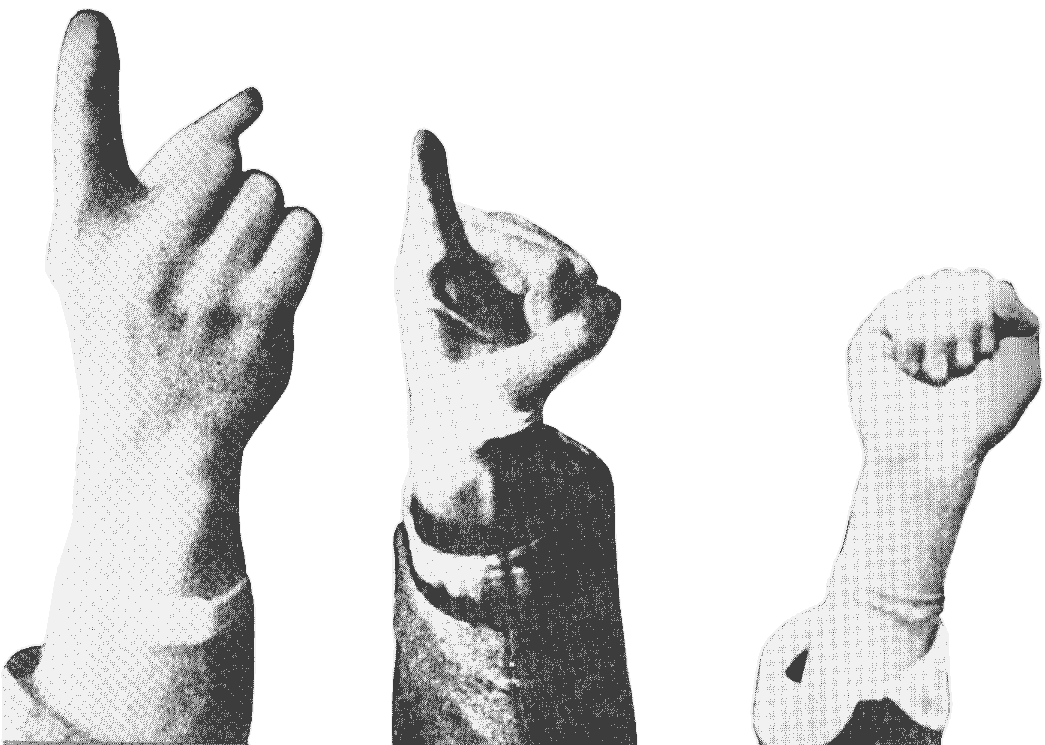
Le fond de l’air est rouge
“Some think World War Three will be set off by a nuclear missile. For me,
that’s the way it will end. In the meantime, the figures of an
intricate game are developing, a game whose decoding will give
historians of the future – if there are any still around – a very hard
time.
A weird game. Its rules change as the match evolves. To start with, the
superpowers’ rivalry transforms itself not only into a Holy Alliance of
the Rich against the Poor, but into a selective co-elimination of
Revolutionary Vanguards wherever bombs would endanger sources of raw
materials, as well as into a manipulation of these vanguards to pursue
goals not their own.
During the last ten years some groups of forces (often more instinctive than organized) have been trying to play the game themselves – even if they knocked over the pieces. Wherever they tried, they failed. Nevertheless, it is their coming into being that has transformed politics most profoundly in our time. This film intends to show some of the steps of this transformation.”
– Chris Marker


Anarchy 76 – How many years to 1984 contains an interview conducted by Chris Marker (thanks to a typo in the title, Chris Marker became Chris Marler), at the Rhodiaceta factory at Besançon, where he spoke to striking factory workers in March 1967.
It was the first strike and factory occupation in France since 1936, and can be seen as the prelude to May 1968. The event was also captured by Chris Marker in his film A bientôt j’espère, which he did together with Mario Marret under the patronage of SLON.
When the film was shown to the workers, they were partly critical of it, because important aspects of their every day experience were missing in the film.
In response, Marker and other SLON filmmakers founded the Groupe Medvedkine, which trained workers to produce their own films collaboratively. The group was named after the Russian filmmaker to whom Chris Marker paid tribute in his films Le Train en Marche [The Train Rolls On] from 1971, and Le Tombeau d’Alexandre [The Last Bolshevik] from 1992.
Chris Marker introduces his interviews as follows:
“On 9th March, I went to the Rhodiaceta factory at Besancon armed with a tape-recorder. It had been on strike since 25th February and had been occupied by the workers. They spoke to me for three hours, quite frankly and openly raising and debating amongst themselves all their problems whether immediate or not. The conversations below are extracts from these tapes.”


After a decade of active and supportive participation in various militant groups of political filmmakers, such as ISKRA or SLON, Chris Marker returned with Le Fond de l’air est rouge, as a critical-essayistic filmmaker in 1977. In 1972, the editor and director Valérie Mayoux, who worked together with Marker at ISKRA, rediscovered cans full of outtakes and rejected materials from SLON and ISKRA productions that had been sorted out for their ambiguity in order to maintain an ideologically „correct“ image.
This found material was the starting point of Le Fond de l’air est rouge. Chris Marker wanted to use the found and discarded archival material to construct an alternative history of the 1968 protests which was not based on mass media material. A year after the film, the entire commentary was published by the left-wing publisher and bookshop owner François Maspero.
Maspero appeared already seven years earlier in Chris Marker’s documentary series, On vous parle de …, where he raised the question of a possible role for left intellectuals between militancy and information.
The publication of Le fond de l’air est rouge, opens with a quote from Marker himself taken from Cahiers du Cinéma: “In the end, I want to say that this film, is a very Editions Maspero film.”
Maspero was also the publisher and editor of the May/June 1968 issue of Partisans, entitled ouvriers, étudiants, un seul combat!, which contains an incredible chronology of the May protests. The chronology is an assemblage of leaflets, manifestos, press extracts, photographs, and articles selected to characterize the various aspects of the May protests, with contributions by Chris Marker.



Guy Debord was a French theorist, cultural critic, artist, filmmaker, and the leading figure of the Situationist International. His book La société du spectacle was published in 1967 and critiques a society that, in his opinion, is increasingly obsessed with images and appearances instead of reality, truth and experience.
One year after Debord published his manifesto, the May 1968 revolts broke out and Situationist slogans could be found on many banners on the streets of Paris, which the Situationists considered their personal success.
The french journalist Julien Besançon had been commenting on major live events, like John F. Kennedy‘s funeral and the first steps on the moon for the French television station Europe 1.
While covering the events of May 1968, Julien Besancon felt the need to preserve the graffitis, that the protestors had written on the walls. These writings, many of them fragments of literature, quoting poets and political thinkers, were as spontaneous as they were ephemeral.




La Batalla de Chile: la lucha de un pueblo sin armas by Patricio Guzmán redefined the documentary genre in Chile and throughout Latin America, using film for political analysis rather than the mere denunciation that dominated political filmmaking at the time.
The film shows the class struggle in the streets in an unprecedented way. Shot between February and September 1973, it documents the political tensions in Chile and the violent counter-revolution by Augusto Pinochet, with the help of the Nixon administration, against the democratically elected government of Salvador Allende.
Marker initially was interested to document the situation in Chile, but since Guzmán had already done so with Primer año, Marker asked if he could buy the film to show it in France. Guzmán agreed, and Marker left Chile with the 16 millimeter master of the film in his suitcase.
A year later at the end of 1972, the situation in Chile changed radically. The right had managed to create a sense of disorder in most of the cities of Chile. Seeing what was happening in the streets, Guzmán felt the need to make a documentary, even though the government had just banned the imports of a certain amount of products, including new film.

The backstory of the film is quite interesting: Guzmán had just finished his first feature- length documentary about the first twelve months of Salvador Allende’s government, entitled Primer año [The First Year] 1971, when Chris Marker knocked on his door in Santiago de Chile.
In despair Guzmán wrote a letter to Marker, asking for his help. A month later approximately 13,200 meters (14 hours) of fresh film arrived at the airport of Santiago de Chile, and the crew around Guzmán could start filming.











![[Chris Marker] Anarchy Magazine 76: How Many Years To 1984 (Vol 7 No 6)](https://chunkingbooks.com/wp-content/uploads/2021/04/anarchy_01-350x350.jpg)
![[Chris Marker] Anarchy Magazine 76: How Many Years To 1984 (Vol 7 No 6)](https://chunkingbooks.com/wp-content/uploads/2021/04/anarchy_02-350x350.jpg)












![[Chris Marker] La batalla de Chile: la lucha de un pueblo sin armas [inscribed]](https://chunkingbooks.com/wp-content/uploads/2021/04/batalla_01-350x350.jpg)
![[Chris Marker] La batalla de Chile: la lucha de un pueblo sin armas [inscribed]](https://chunkingbooks.com/wp-content/uploads/2021/04/batalla_02-350x350.jpg)